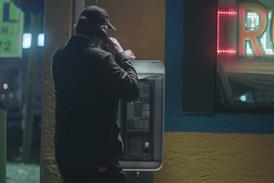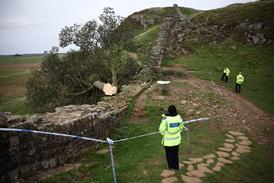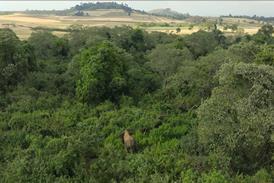Stevenson, controller of operations at ITV News, said: "There are lots of people out there that understand tapeless technology - we have to stop being so precious about standards and get on with it.”
All speakers agreed that tapeless workflows were inevitable, but many were apprehensive regarding the benefits.
Interoperability problems, cost, complexity and a lack of training were some of the key themes of the day.
Neil Hatton, head of special projects from Sanctuary Post and a UK Screen board member, argued that broadcasters that had ventured into tapeless had created a walled garden that works internally but has little impact on the wider production and post production environment.
He added that it was not clear that there was a return on investment for facilities in going tapeless. He said: “Affordable bandwidth is missing, and IT specialists are very expensive for facilities houses. Production companies should expect to pick up some of the costs.”
Jane Wilson, head of UK production for RDF, complained of broadcasters not making clear which deliverables they require. However, she added that in today's economic climate the only squeezable resource was time, and that a successful tapeless workflow should speed up a production process.
However the benefits of tapeless were lauded by many of those that had successfully completed the transition.
“Tapeless systems do not save money, but they do allow broadcasters to do more” said John Maxwell Hobbs, head of technology from BBC Scotland, Maxwell helped create Scotland's Pacific Quay, the first UK-based tapeless media centre.
This sentiment was echoed by Adrian Bull, chief technology officer from Ascent Media. Ascent has a digital asset management offering and an international presence.
He said: "Tapeless workflows are resolution independent unlike a more physical workflow; and editors can online and grade internationally [meaning post is not confined to one site]”.
He argued that a tapeless environment is much more secure than the tape based domain. “Delivery receipts indicate a successful delivery. Physical objects can get lost,” he said.
Paul Turner, vice president of product marketing from media storage and server manufacturer Omneon, reiterated this. “Every time a change is made to a physical file, this must be logged manually, thereby creating room for human error," he said. "When files are moved in a tapeless environment metadata is transferred with the file.”
Dave Adie head of business development from Red Bee Media argued that storing content in a tapeless environment allows the owners of content to “research, analyse and track trends” giving them better knowledge and control of their content.
Jon Attard technology controller, Vision Productions from the BBC described the Digital Media Initiative and the BBC's commitment to tapeless in the long term but warned technologists that they are like “kitchen manufacturers” while those making programmes were “the chefs.”
“They [programme makers] want an uncomplicated environment that allows them to work efficiently, it is up to us to provide it.”
The Broadcast Mastering Digital Workflows took place at the Radisson Edwardian hotel in central London on 6 March.


























No comments yet